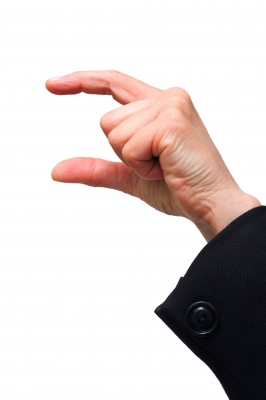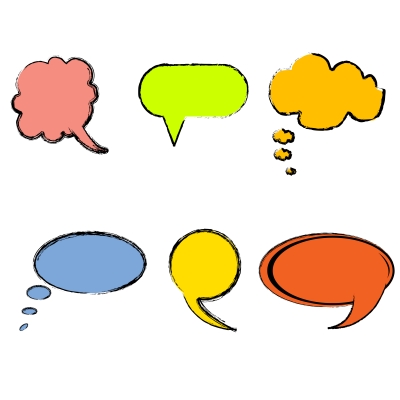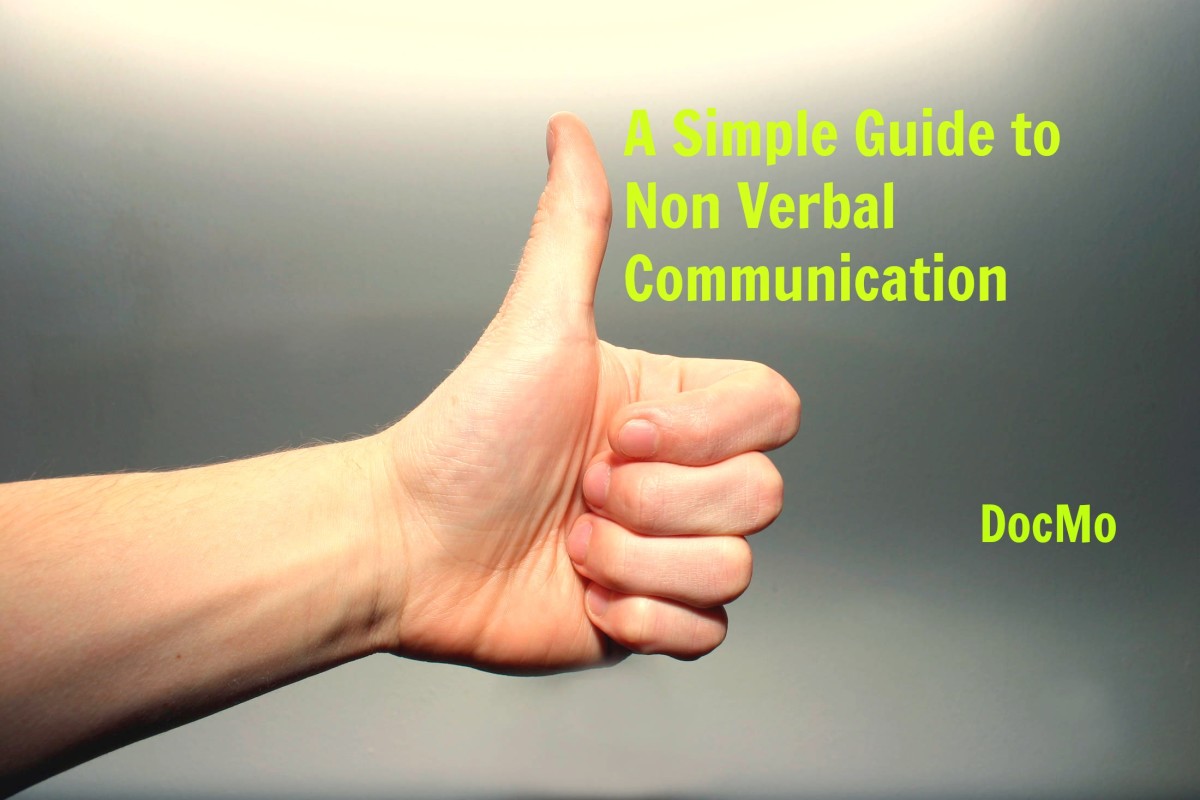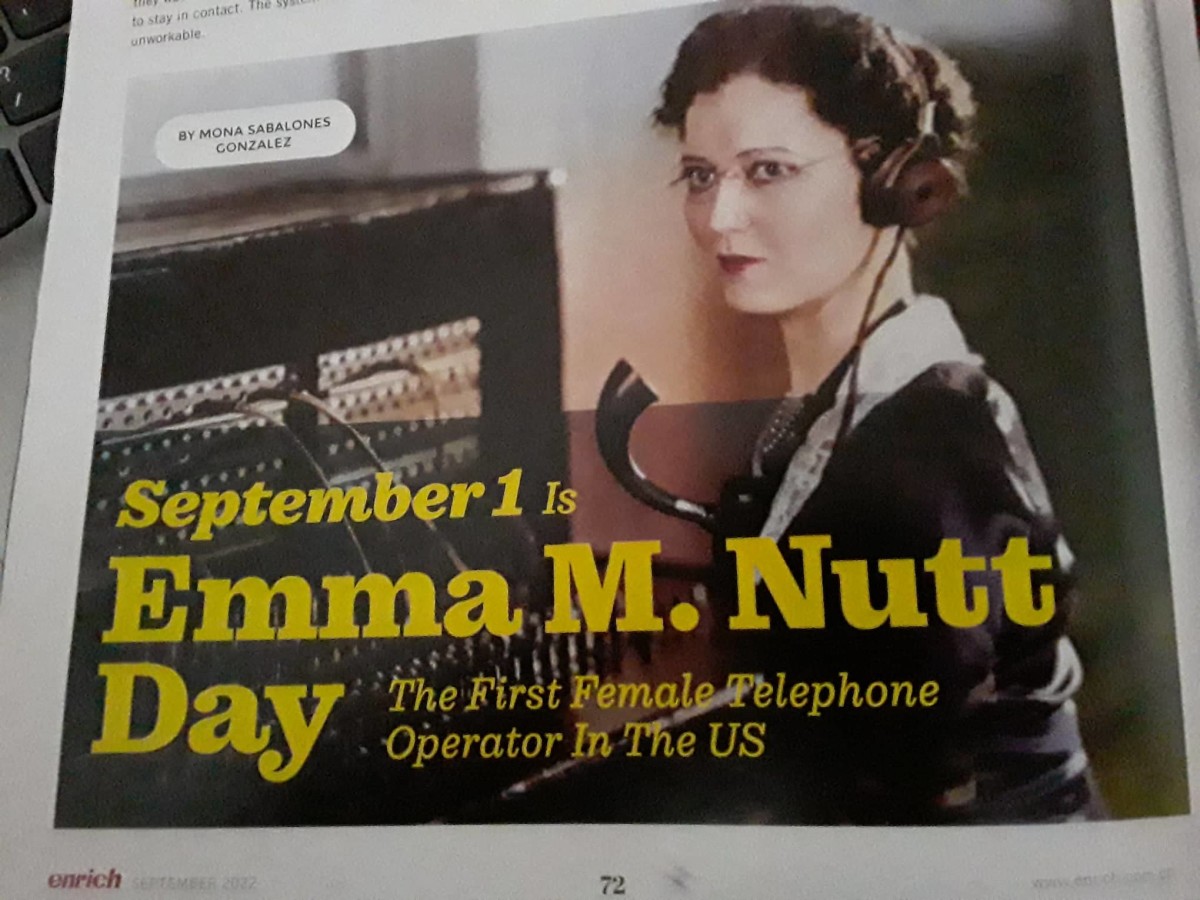The Power and Persuasion of Nonverbal Communication

You may already know that nonverbal communication generally means communication without words. It can involve words, such as when you use voice inflection to color the meaning of your message.
Nonverbal communication can also include your use of gestures and movements or the way you use objects and your personal appearance to show the meaning of your information to another person. Your nonverbal communication can be filled with purpose and the desire to send a message, or it may be accidental and unintentional. Whatever the mode or the meaning of the nonverbal communication that you may select, it is a powerful aspect of your communication ability.
Let us look at the definition of nonverbal communication and then examine the impact that it has on your overall communication.We shall consider some contexts and rules for nonverbal communication, types of nonverbal behaviors and finally, how you can improve your ability to communicate nonverbally.
Elements of Non Verbal Communication
Nonverbal communication refers to the information that is transmitted from senders to receivers without the use of words. It includes several major categories: from the tone and pitch of your voice to how you are standing to where you are standing and anything else that feeds the five senses.
Broad category doesn't begin to cover it.
All these elements constitute the basic components of nonverbal communication, and when you use them to enhance your communication techniques, they can have significant impact on your messages.
What you are about to read may cause you to smile, frown, shake your head in disbelief or nod in agreement. In any case, you will probably acknowledge the truth of the material immediately and indicate your reaction in a nonverbal manner. Someone watching you could probably tell by your actions what your response to the message is.
The message is that estimates of the impact of nonverbal communication on the overall meaning of any message ranges from about sixty-five percent to ninety-five percent.If those estimates are even close, they strongly emphasize the importance of our nonverbal communicative behaviors.

Distinctive Codes
While you may have spent ten to fourteen years studying writing and reading skills, and perhaps have had a few short lessons on listening and public speaking, you probably have no had any formal instruction in the skills of nonverbal communication. Yet you do it, usually pretty well, and almost constantly? How is that so? Is it a natural inborn ability? Is it something that you just picked up along the way? Researchers have put their efforts into answering those questions and have concluded that the instinct to want to communicate both verbally and nonverbally is innate in humans.
The distinctive symbol codes we use in our culture are learned. Generally, we learn at first by imitation and reinforcement; later, by formal practice and instruction. Nonverbal communication is similar to our use of words in that there are specific forms, functions and rules that govern our ability to create clear meanings, and these rules vary by group and culture, as do our verbal practices. Let us now consider some of the principles involved in using nonverbal communication.
Contexts and Rules
You use nonverbal behaviors to communicate in a variety of situations. Sometimes you wave your hand instead of saying hello. At other times you point in order to show a direction or you raise your hand in class in order to be called on or you smile when you see someone doing a good job.Each of these actions illustrates one of the following six functions of nonverbal communication behaviors:
- Substituting
- Reinforcing
- Regulating
- Contradicting
- Managing impressions
- Establishing relationships
For example, waiving or nodding instead of talking illustrates the substituting function. There are complete languages that use only movements for communication - the sign language developed by Native Americans or American Sign Language taught on many campuses and used by millions of hearing impaired people all the time. It is important to remember that the simple movements and gestures of everyday life, such as waving, were the foundation of more complex movements used to build whole sentences and communicate in sophisticated concepts.
In addition to using nonverbal communication substitutes for words, we communicate nonverbally in order to reinforce or complement our verbal sounds. When you point to clarify your meaning or nod your head while you say, "Yes, of course, I see what you mean," or pound the table with your fist in anger, you are reinforcing your message and complementing your words.
Joining a Conversation
If you want to join a conversation, you use nonverbal signals to indicate that interest. Such movements regulate the flow of interaction. In class, you use a formal motion to get the instructor's attention - the raising the hand. In ordinary small group conversations, people who want to join usually nod, raise their eyebrows a little and open their mouths slightly as they sense that the speaking is coming to a pause. Sometimes we use a pencil or pen, raise it and tap it lightly when we want to begin speaking or if you are speaking, you may raise your hand slightly, palm facing the listener and thereby "ask" the listening to hold for a moment while you conclude an idea.
Contradicting Verbal Messages
If you want to contradict your verbal message, you can easily do that by displaying an opposite nonverbal behavior. For example, if you want to relay the message that you do not like a certain food, so you choose sarcasm as a strategy.Thus you can say "This turnip is really wonderful," using an exaggerated stress on the syllable won. At the same time, you crinkle up your nose and perhaps use a thumb and index finger to pinch your nostrils together. Your message is accurate only the receiver gets the nonverbal information from your tone and body language.
Deception
Deceiving another person with your nonverbal messages is another form of contradiction. For example, you may be bored on a date or in class, but you do not want to communicate this feeling. So you pretend - you simulate interest, by keeping eye contact, nodding and sometimes smiling, all of which are not truthful messages about your feelings.Much research has been done on deception in nonverbal communication, from the cues we all use in social situations, to the efforts criminals employ to deceive their victims or police investigators.In their studies, they have looked at eye contact and hand-to-face gestures as clues to deception. The size of the pupil of the eye also reveals the heightened anxiety or interest or arousal.
Impression Management
A fifth dimension of nonverbal communication is impression management; that is, to create and control the way other people perceive you.You arrange your hair in a certain way, you speak with a chosen pitch or tone of voice, you want a particular car or dog or bicycle or wristwatch or ring or shoe or eyeglasses that will represent you to the rest of the world. You spend a great deal of time selecting the right outfit for a job interview or for lunch with the parents of someone you are dating.
In each of these situations you are attempting to create a message about yourself based on the impression these items and behaviors may form in the mind of the intended audience. When you listen to others, respond to them, wait for them to finish talking or cut them off in mid-sentence, you are creating an impression. Sensitive nonverbal communicators try to make sure that the impression received by their listeners is the same as the one they intended to send. On the other hand, you probably have met people who seem to loud, too pushy, stand too close, lean into a group and interrupt at will whomever is speaking. These people are violating social norms for acceptable nonverbal behavior and they are not managing their impressions well.
Establishing Relationships
Finally, we can use nonverbal messages to establish or reveal a relationship. The simple gold band on the third finger of the left hand is one way to communicate the existence of a relationship by using an object. Standing at the head of a table around which others are seated communicates the existence and type of relationship by posture and proximity. A police officer in uniform has a clear relationship to a traffic accident, while in a clinic, people wearing white jackets and stethoscopes communicate to us that they have a relationship to a hospital. Whether you touch someone else, how you touch that person, and when and where you touch communicates information about the relationship.
Continuous Communication
These six functions of nonverbal communication can be conveyed in a variety of ways and with a variety of outcomes, but there are some rules or principles that apply to all areas.
First, because everything about you - looks, dress, action, and inaction - can be interpreted, you are continuously communicating. Even if you close the door and turn off the light to avoid your friends, you are giving your friends a message that they are quite capable of understanding. You can be asleep in the library and everyone who walks by you will get the impression of who and what you are. If you have an early-morning or late-afternoon class/meeting and you doze off during it, you will be communicating something to the people around you. This rule is often stated, as "You cannot not communicate." Even without other people present, you communicate with yourself in dreams and thoughts.
So, through nonverbal communication, you are always communicating.
Managing Ambiguity
Next, nonverbal communication is often ambiguous. By themselves, gestures, movements, objects and so on may tell you only part of the story. You need to see the context, the relationship, the accompanying verbal behavior, if any, and the responses. Students yawn in classrooms sometimes because they are bored, sometimes because they ate a big lunch and are sleepy, sometimes because they stayed up all night studying. All of these situations are perfectly plausible, but each one represents a very different context.
Or, you may see someone gazing out a window. She could be daydreaming, avoiding someone, bird watching or evaluating the possibility of snow over the weekend. Because so many contexts are possible, we may attach implied meanings to them that turn out to be erroneous. Although we can make a tentative conclusion about the nonverbal meaning, we must keep it tentative unless we get more information from the situation or other clues about the message. Someone standing on the curb in front of a college campus, backpack filled with books, facing oncoming traffic with a thumb extended provides a clearly implied context, but not just from the thumb. All the factors together help dissipate the ambiguity.
Cultural Communication

Crossing Cultural Boundaries
Third, remember that all communication exists in a culture, including nonverbal communication. We learn a set of gestures, movements, habits, styles of dress and so on within one cultural setting and that may not even be close to the set someone else has learned in another culture. Especially bothersome for international travelers are the gestures used to substitute or accompany verbal expression. We may point to clarify what we mean, but the movement may offend people in other cultures. Anyone who has traveled can tell stories of mix-ups and even altercations following improper use of nonverbal indicators.In the United States, we whistle to cheer our teams at sporting events, whereas in most parts of Europe whistling can be derisive.
Finally, nonverbal communication is probably best used to express attitudes, feelings and relationships. A couple walking down the hall hand in hand is a clear example of expression of a relationship. Whether you talk to someone face to face or facing away, standing up or sitting down, even whether you address the person at all, indicates something about the feelings and the relationship involved. A surprised look on your face, or a deep frown or a warm embrace is good examples of this use of nonverbal communication.
Improving Communication Competency
Becoming aware of the ways in which you communicate nonverbally, and knowing that different people may have very different ways of using their nonverbal communication is the best first step towards improving your abilities. Self-awareness can be developed simply by getting into the habit of monitoring your behavior and taking note of your posture, movements and objects. You may to get some outside assistance by asking friends for feedback.The activities can proved you with increased sensitivity to your own and others nonverbal interactions.
Once you develop awareness, you might try to expand your repertoire of nonverbal activities. You can expand your ability to decode the messages of others more accurately if you expand your vocabulary for sending messages. There are ranges of behavior to be explored that can add depth to your abilities as a receiver if you learn them and practice them.
Good communication focuses on the message's receiver. By becoming self-aware, increasing your awareness of others and stretch your own abilities you will have many choices from which to select in order to create a clear message for your listeners. You can send the correct signals to enhance your verbal messages. You can also look at your listeners and read their nonverbal messages in order to evaluate your own performance and then adjust or adapt your messages. A powerful tool, nonverbal communication is an essential part of overall communication.











